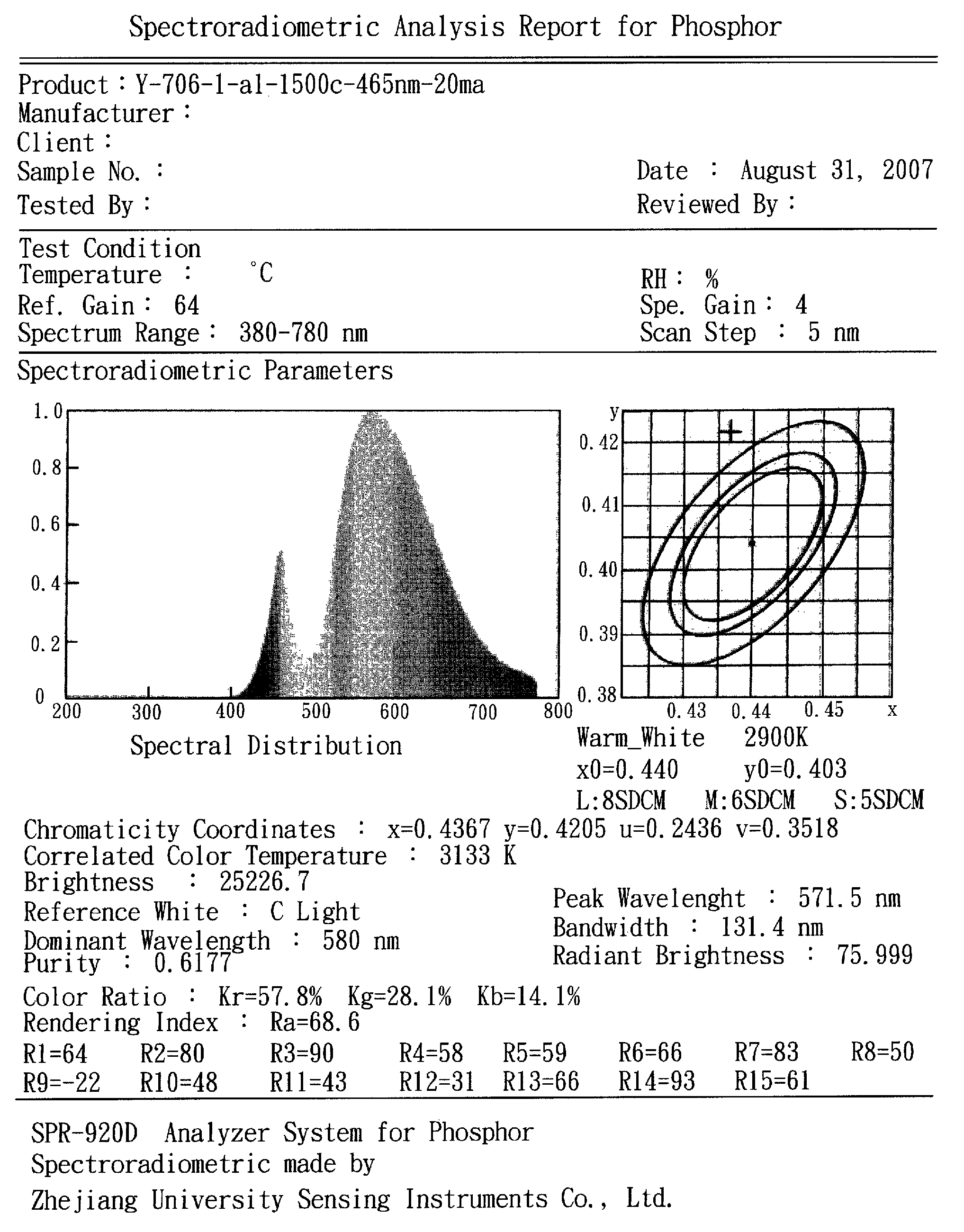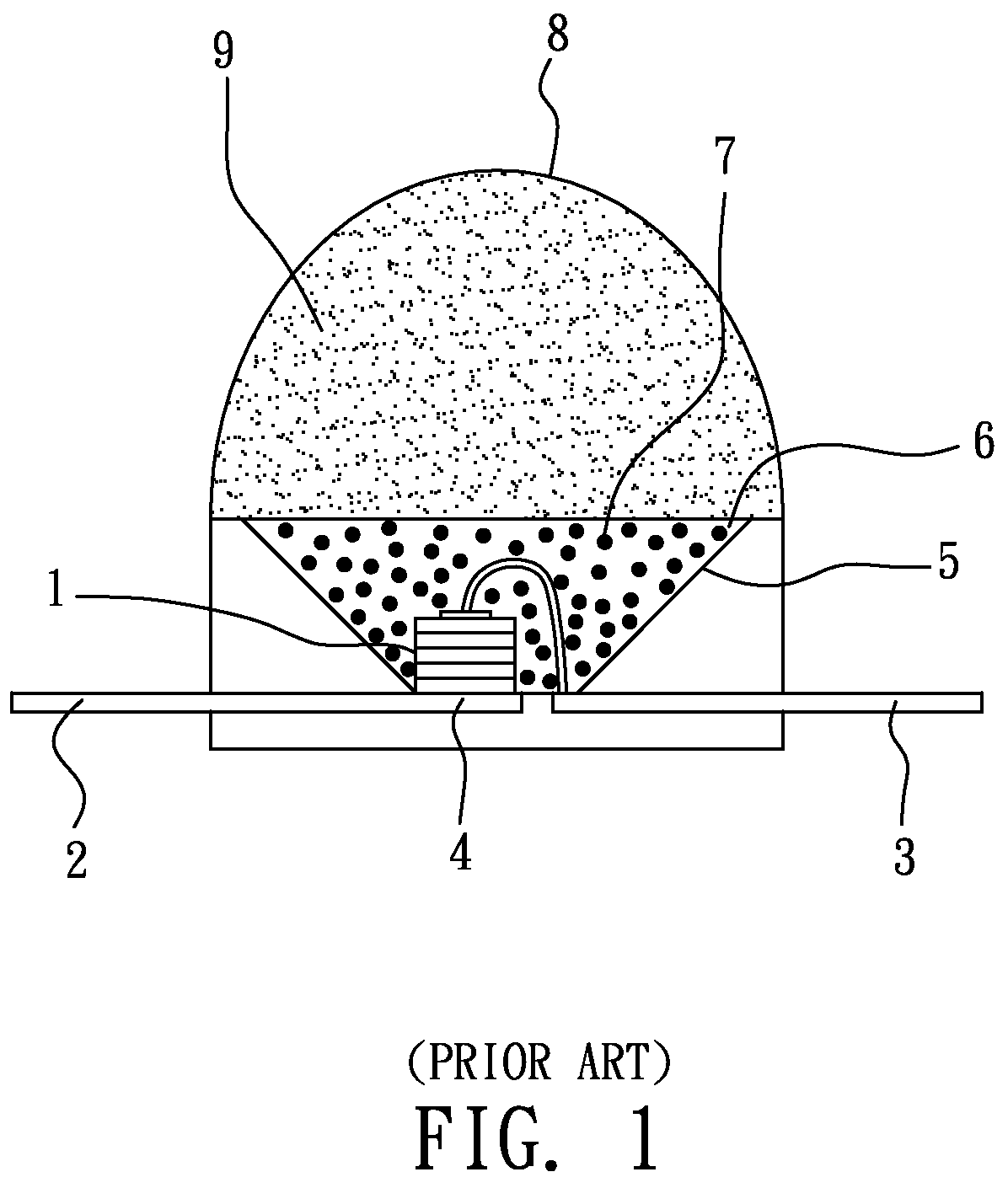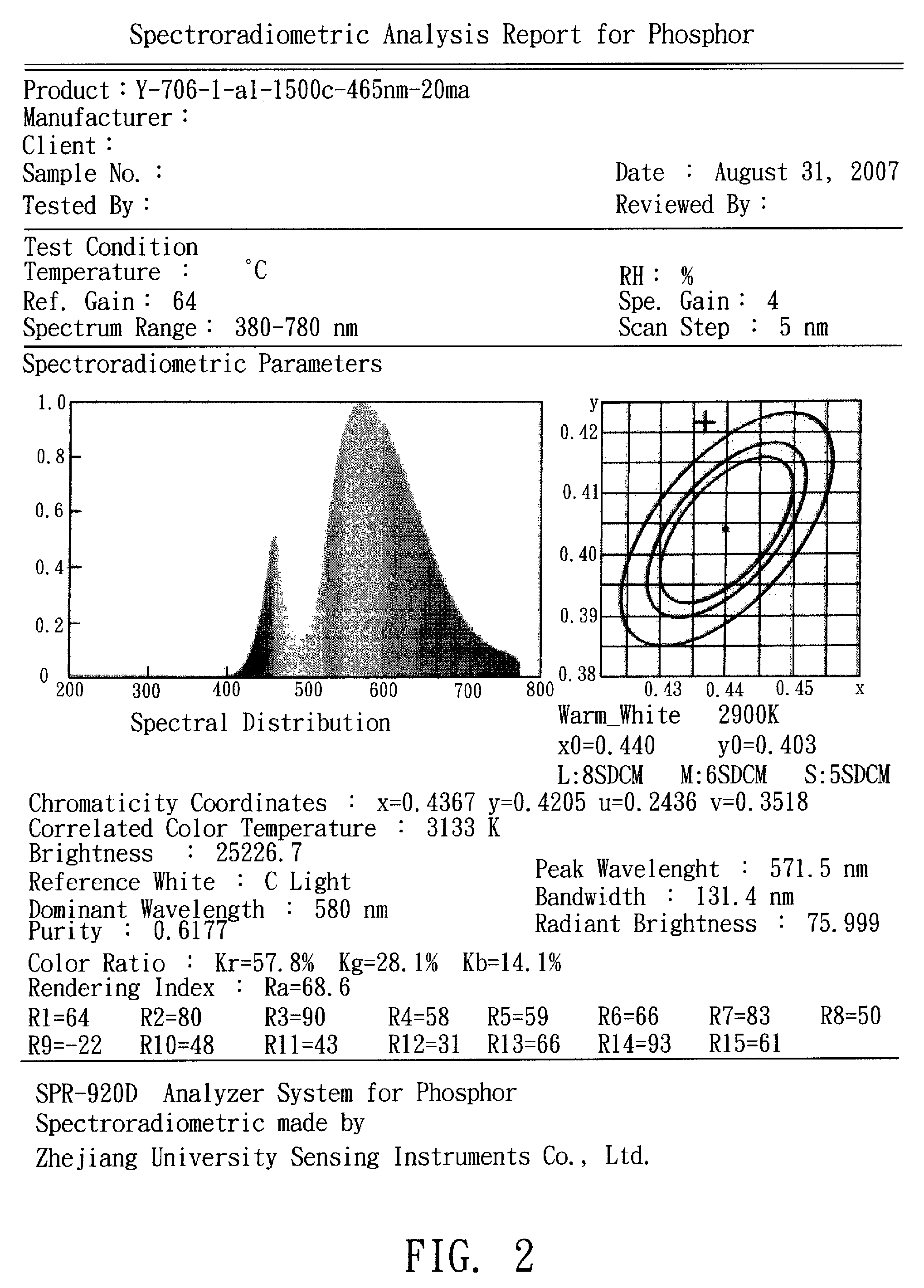Warm-white light-emitting diode and its phosphor powder
a light-emitting diode and warm-white technology, applied in the field of microelectronics and lighting technology, can solve the problems of large amount of blue radiation, non-uniform brightness and color of light emitted from leds, and substantive drawbacks of given schemes, and achieve the effect of reducing the amount of first-order blue light emitted
- Summary
- Abstract
- Description
- Claims
- Application Information
AI Technical Summary
Benefits of technology
Problems solved by technology
Method used
Image
Examples
Embodiment Construction
[0024]First of all, the objective of the present invention is to overcome the aforementioned overcomes. A warm-white light-emitting diode (LED) according to the present invention has the substrate of indium gallium nitride (InGaN) heterojunction containing a large amount of quantum wells and having a light conversion polymer layer, characterized by that the light conversion polymer layer is uniform in concentration, the light-emitting surface and edges of the indium gallium nitride heterojunction are covered with a thermosetting polymer, and the light conversion polymer layer contains some fluorescent powders, which are formed as at least two particle layers in the light conversion polymer layer to ensure the light transmitted reaching 20% of the first-order blue light and 70˜80% from the second-order orange-yellow light of indium gallium nitride heterojunction, wherein the molecular weight of the thermosetting polymer layer is M>20000 g / mol; the mass fraction of the fluorescent par...
PUM
| Property | Measurement | Unit |
|---|---|---|
| transparency | aaaaa | aaaaa |
| 2θ | aaaaa | aaaaa |
| color temperature | aaaaa | aaaaa |
Abstract
Description
Claims
Application Information
 Login to View More
Login to View More - R&D
- Intellectual Property
- Life Sciences
- Materials
- Tech Scout
- Unparalleled Data Quality
- Higher Quality Content
- 60% Fewer Hallucinations
Browse by: Latest US Patents, China's latest patents, Technical Efficacy Thesaurus, Application Domain, Technology Topic, Popular Technical Reports.
© 2025 PatSnap. All rights reserved.Legal|Privacy policy|Modern Slavery Act Transparency Statement|Sitemap|About US| Contact US: help@patsnap.com



